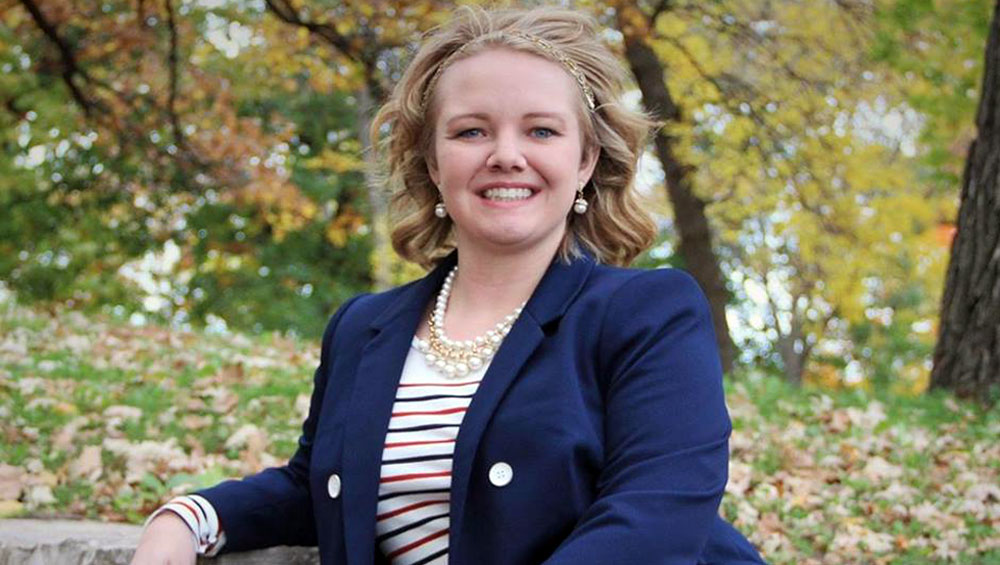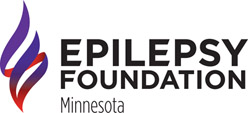Thriving with Epilepsy: Taylor Johnson
Meet Taylor Johnson: a recent Hamline University graduate, a former participant in EFMN's Shining Star program, a dedicated epilepsy advocate, and one of Epilepsy Foundation of Minnesota's newest board members.

Tayler's Journey with Epilepsy
1. Tell us about your journey with epilepsy.
I was first diagnosed with epilepsy on December 26, 2006 after having a grand-mal seizure when I was in middle school. I remember waking up in the hospital and not understanding what had happened. After a visit with a neurologist left us with more questions than answers, we turned to the Epilepsy Foundation of Minnesota (EFMN) for support. An EFMN staff member met with my immediate and extended family to teach us about seizures and epilepsy. They assured my dad that I didn’t need to be kept in a bubble and that I could do many of the things I was doing before being diagnosed—dancing, sleepover with friends, etc.
Most of my friends were very open to my diagnosis and did not see or treat me differently. I did encounter some teasing, but it was never directly to my face – and it was only by those who didn’t understand epilepsy. As I entered high school, I had three grand-mal seizures. Despite this, I was able to stay on the dance team and remained an honors student.
During my sophomore year, I had a seizure during dance practice. My dance coaches and the football coaches helped as I came to, but many of my teammates didn’t fully understand what had happened. I realized I wanted to teach my teammates and everyone else that I met throughout my high school years about seizures. During my senior year, I conducted a project on Seizure First Aid and presented my research to several health classes. I felt this project was a way to advocate for myself and for other people with epilepsy who may not have been ready to speak out.
By the time I graduated high school, I had obtained my driver’s license, been nominated as homecoming royalty and an Anoka Ambassador Candidate, and graduated with honors. Post-graduation, I obtained my bachelor’s degree in Psychology and Religion at Hamline University. During college, I performed on the dance team, was on the Dean’s List, worked for the Disability Office, and joined a sorority on campus to perform philanthropic work and meet other young women who wanted to make a difference. Now I’m working towards my Doctorate of Psychology at Saint Mary’s University and am still advocating and overcoming the stigma of epilepsy. I may have epilepsy, but epilepsy doesn’t have me.
2. What was it like being a student (in high school and at college) living with epilepsy? What advice would you give to other young adults navigating school with epilepsy?
I can’t say it was uneventful. I had three seizures during my time in middle school, and during that time I had classmates refer to me as “seizure girl” and some friends avoided me because they didn’t understand what epilepsy and seizures were. When I had a seizure in class, many of my classmates thought I had died. I also struggled with a teacher who didn’t believe that I needed accommodations because my condition was not physically obvious. Alongside my parents, I had to learn to advocate for myself in the classroom. As I entered high school, I continued advocating for myself, getting in touch with administration, nursing staff, teachers, and dance coaches to make sure they were educated and prepared.
Upon entering my undergraduate education, I connected with the disability office so that I would have a safety plan in case I had another seizure. I ended up working there, which allowed me to help other students as well as helping myself continue to advocate for those affected by epilepsy. My supervisors were very happy to help promote November as Epilepsy Awareness Month, and they also wore purple on “Purple Day” in my honor.
As a graduate student, I registered with the Disability Office at Saint Mary’s University, so there is a plan set up in case I have a seizure. I also make sure I speak to my professors one-on-one, so they are aware and prepared to help me. I can say overall that in my experience, as long as you are honest about it, your fellow classmates and teachers are generally understanding and are willing to help if it is needed.
3. Which programs were you involved with at EFMN?
I was involved with Shining Stars, Winning Kid and YAC (Youth Advisory Council) when I was younger, and now I am a member of the Board of Directors!
4. Why is it important to you to share your story?
I find it important to share my story because I want everyone to know that even though everyone has a different experience and a unique journey, it is important that no one loses hope. I remember being 12 years old and scared of my seizures because I feared I wouldn’t be a “normal” kid anymore. Now as I am a little older, I realize that “normal” is not a good word to use – everyone is different and epilepsy does not have to stop you from doing anything you want to do. I want those who are in that tough spot to know that things do get better. It might take time, but it will.
Board of Directors Member
1. What do you bring to the EFMN Board of Directors?
I feel that with my younger age, liberal arts education, and firsthand knowledge of the challenges and experiences of epilepsy, I will bring a unique and dynamic view, especially for the youth and young adults.
2. Where are you most excited to focus your energy as a board member? What impact are you hoping to have?
I am excited to not only to get to know the other board members, but I am also eager to see what I can do for youth and young adults with epilepsy – through seizure smart schools and further education initiatives to support young people.
Advocacy Day - Epilepsy Awareness Day at the Capitol
1. Why did you want to be an advocate for epilepsy?
I advocate because of my own challenges – and those of everyone living with epilepsy – that elected representatives may not understand.
2. Why is it important to meet with your state legislators?
It’s important to meet with them because of how many of them do not understand what it is like for someone to live with epilepsy, and how it impacts their caregivers as well.
3. How have your state legislators responded to your past meetings?
Most of them have responded very well to the meetings I’ve had. A few seemed indifferent but overall, many of them seemed as if they truly cared and were interested to learn how they could help. Similarly, when I was an advocate in Washington D.C. with EFMN as a Winning Kid, their aids cared about our stories and reasons for being there.
4. How does a Day at the Capitol participant benefit from participating?
I think it’s a great way to know our representatives and exchange ideas. They need to learn about us, and it’s a way for us to learn to see things from their point of view as well.
5. What advice would you give a first-time advocate at Day at the Capitol?
Take a deep breath and tell your story. And don’t forget to ask any questions if you have any. Also, arrive early to your appointments if you can. Sometimes you’re able to meet with them longer!

Mark Your Calendars!
Join us on March 7, 2016 for EFMN’s Epilepsy Awareness Day at the Capitol. Meet with your state representatives and senator and share your journey with epilepsy. Together, we can help empower people affected by seizures, raise public awareness and overcome the barriers, stigma and discrimination surrounding epilepsy. RSVP to rsvp@efmn.org or call 800.779.0777 ext. 2310.
Sign up here to become a year-round advocate!
